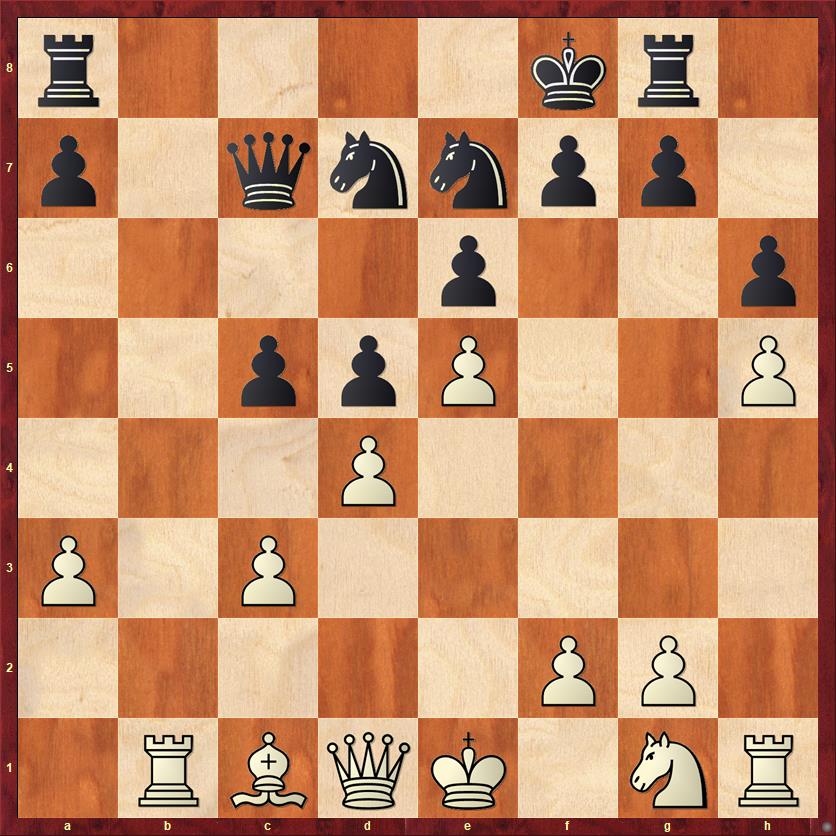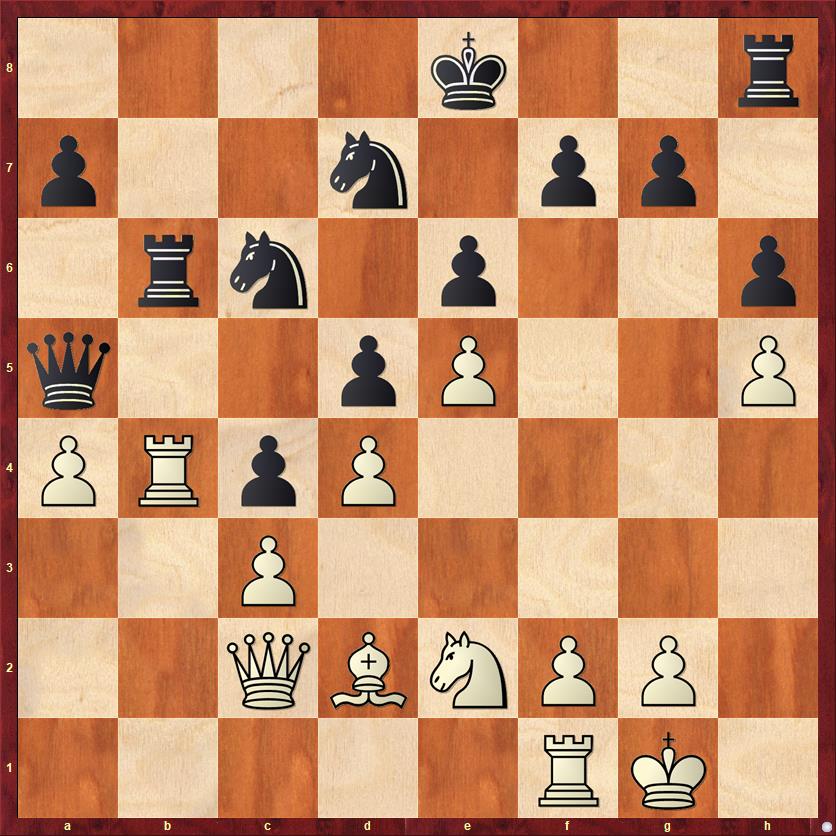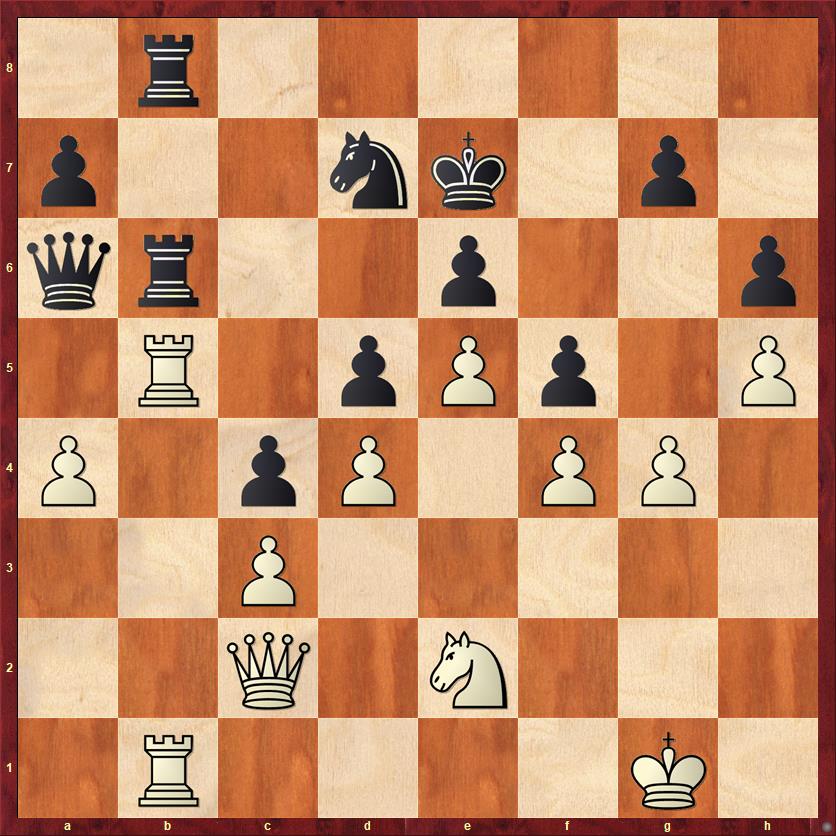The only significant sports event in the world got a little bit more interesting today! In the seventh round of the 2020 FIDE Candidates tournament, the two leaders faced off against each other, and chess fans were rewarded with an exciting and decisive game. Maxime Vachier-Lagrave defeated Ian Nepomniachtchi to catch up with the latter at the halfway point in the tournament.
Once again the other three games were draws, which means that at the halfway point Nepo has played 4 of the 9 decisive games in the tournament. If we didn’t have him, it would have been a pretty boring tournament so far! Here are the standings:
1-2. Ian Nepomniachtchi, Maxime Vachier-Lagrave, 4.5-2.5
3-6. Fabiano Caruana, Alexander Grischuk, Anish Giri, Wang Hao, 3.5-3.5
7-8. Ding Liren, Kirill Alekseenko, 2.5-4.5
For Vachier-Lagrave, this is such a dream come true. Remember that ten days before the tournament, he didn’t even think he was playing in this tournament! He was the first alternate, which in any normal year would be as good as being the 83,751st alternate. But then coronavirus came, and Teimour Radjabov withdrew because of it, and suddenly MVL is playing in the most important tournament of his life and tied for first place!
MVL’s victory not only give him more hope, it also allowed all those players who are tied for third to move a half-point closer to the lead even without doing anything. With seven rounds still to go, six players are still very much in contention. Only the last two players seem to be out of the running. In Alekseenko’s case that is not too surprising, as he is rated much lower than the others; in fact, 2.5-4.5 is a good result for him. He’s put up a good fight every game and proved that he “belongs.” For Ding, being tied for last is a major disappointment.
Here are a couple highlights from the Vachier-Lagrave versus Nepomniachtchi matchup.
Nepo was playing Black. With a one-point lead, a lot of players would have tried to play it safe, but not Nepo: he chose one of the sharpest opening variations in chess, the Winawer Variation of the French Defense. For a while he was doing just fine.

FEN: r4kr1/p1qnnpp1/4p2p/2ppP2P/3P4/P1P5/5PP1/1RBQK1NR b K – 0 16
I’ve written before how super-grandmaster games sometimes look as if they were played by beginners, because they know exactly how to bend the rules. In the above position, we have gone 16 moves into the game and the only piece that White has developed is his queen rook, which has moved from a1 to b1! This is not how we teach our students to play chess.
Why isn’t White getting crushed? Well, on the Black side we have a comical situation where it looks as if Black didn’t know the rules for castling and he put his king on the square where the rook should be and the rook on the square where his king should be! This makes a huge difference because Black’s king is stuck in the center and it’s very far from clear how the rook will ever get into the game. At some point, Black is doing to have to spend a lot of tempi sorting this situation out, so what he has to hope for is to get a very static, dry position where a tempo or two (or three or four) won’t matter.
Black started with 16. … Qa5, a very reasonable move, and then White played 17. Bd2!, offering the a-pawn. Although 17. … Qxa3 is not necessarily bad for Black, White is really hoping for that move because it solves a lot of problems. White can castle, take over the a-file, and reposition his bishop to a3, where it will be very strong. Black’s extra pawn on a7 is meaningless in the short run, and even in the long run it’s very difficult to promote such a pawn.
So Black declined the gift and challenged White’s control of the b-file with 17. … Rb8. White continued developing with 18. Ne2, and now Black made a decision that really came back to haunt him: 18. … c4?
The commentators on chess.com, Danny Rensch and Robert Hess (“You can’t spell ‘chess’ without ‘Hess'”) were very critical of this move. The reason is that after, say, 18. … Rxb1 19. Qxb1 Qa6, the pressure of Black’s queen on the light squares is really useful. It keeps White from castling and asks how he plans to finish developing. After 18. … c4, Black never had a single threat that would divert White from his plan of castling and attacking the stranded Black monarch.
Why did Nepo play it? Well, you’d have to ask him. (I’m sure that someone did in the postgame press conference.) But it may come back to what I said earlier: Black would ideally like a position with as few open lines as possible, so that he will have time to straighten out his kingside. So he may have thought that 18. … c4 would help him create a “closed” position.
This is why chess is hard, even for the fifth highest rated player in the world! You have to make tricky judgments like this: Is this move good because it closes the position, or bad because it takes away my own counterplay?
Play continued 19. O-O (thank you very much) Rb6 20. Qc2 Rh8 21. a4 Ke8 (the king and rook are back to their original positions — but don’t forget, Black is not allowed to castle!) 22. Rb4 Nc6 (see diagram).

FEN: 4k2r/p2n1pp1/1rn1p2p/q2pP2P/PRpP4/2P5/2QBNPP1/5RK1 w – – 0 23
Nepo was certainly counting on this move and planning to play … Ke7 next. However, MVL has other ideas.
23. f4! …
A great move, which I think is more based on intuition than calculation. MVL offers an exchange sacrifice that completely shuts down play on the queenside and allows him to focus all of his efforts on the kingside. If Black accepts the exchange, White has a monstrous attack after 23. … Nxb4 24. cb Qa6 25. b5 Qc8 26. f5! If castling were still legal for Black, he could perhaps defend this position, but without castling he has huge problems. Meanwhile, White’s pieces all have ideal squares: the bishop can come to b4, the knight can come to f4, the rook and queen can load up on the f-file. It’s an attacker’s dream position.
Perhaps Black can consider 23. … Rxb4 or even Fritz’s weird recommendation, 23. … Ra6. But Nepo saw the pawn break f4-f5 coming and wanted no part of it, and played
23. … Ne7.
It must have been agony to play this, taking back his previous move. Look at all the tempi that Black has lost: Ke8-f8-e8 (two tempi), Rh8-g8-h8 (two tempi), Ne7-c6-e7 (two tempi). Admittedly, White lost some tempi too, with Qd1-g4-d1 and (still to come) with Bc1-d2-c1. But it seems as if the two-tempo difference is what gives White’s attack so much power. Black is two moves too slow to defend all of White’s threats, and he just gets blown out.
I’ll give the rest of the game without lengthy comments, just so you can see how MVL realized his advantage.
24. R1b1 f5 25. Rb5 Qa6 26. Bc1 Kf7 27. Ba3 R8b8 28. Bxe7 Kxe7 29. g4!

FEN: 1r6/p2nk1p1/qr2p2p/1R1pPp1P/P1pP1PP1/2P5/2Q1N3/1R4K1 b – – 0 29
With the knight on e7 eliminated, Black simply does not have the wherewithal to hold black the hordes of White infantry. A particularly entertaining line is 29. … fg 30. Qg6 Kf8 31. f5! ef 32. e6! The three-pawn sacrifice is rewarded after 32. … Rxe6 33. Rxb8+ Nxb8 34. Rxb8+. A slightly better try for Black is 32. … Ne5, but then White’s amazing e-pawn just keeps right on going with 33. e7+! I once gave a ChessLecture about pawns like this, passed pawns that come unstuck in the middlegame and rampage through an opponent’s position. I called them “berserker pawns.”
As he did on move 23, Nepo sees trouble coming and avoids the most gruesome ways to die, but his position is nevertheless beyond saving.
29. … Rxb5 30. ab Rxb5 31. gf Rxb1+ 32. Qxb1 ef
This part of the game is very instructive. MVL could take the pawn immediately with 33. Qxf5, but that seems a little bit inaccurate. After 33. … Qe6 the one thing that White doesn’t want to do is trade queens, because in a knight-and-pawn endgame Black’s long-neglected a-pawn could become an actual threat. Wing pawns are not so easy for knights to stop. Instead, MVL plays patiently and keeps Nepo from getting any counterplay.
33. Ng3 Qb6 34. Nxf5+ Kf8 35. Qa1 Qe6 36. Ng3! …
This is a case of “lost tempi” being lost in a really good way! The knight on g3 turns out to be an outstanding defender. It singlehandedly prevents Black from setting up any perpetual checks, and therefore it frees White’s queen to go on the attack.
36. … Qg4 37. Kg2 Qxf4 38. Qxa7 Ke7 39. Qa3+ Kd8 40. Qd6 …
At this point, watching the video feed, Danny Rensch said that Nepo wasn’t even looking at the board. He was just looking off into space and shaking his head. His days as sole leader of the tournament were over, at least for the time being.
40. … g5 41. hg h5 42. g7 Black resigns


